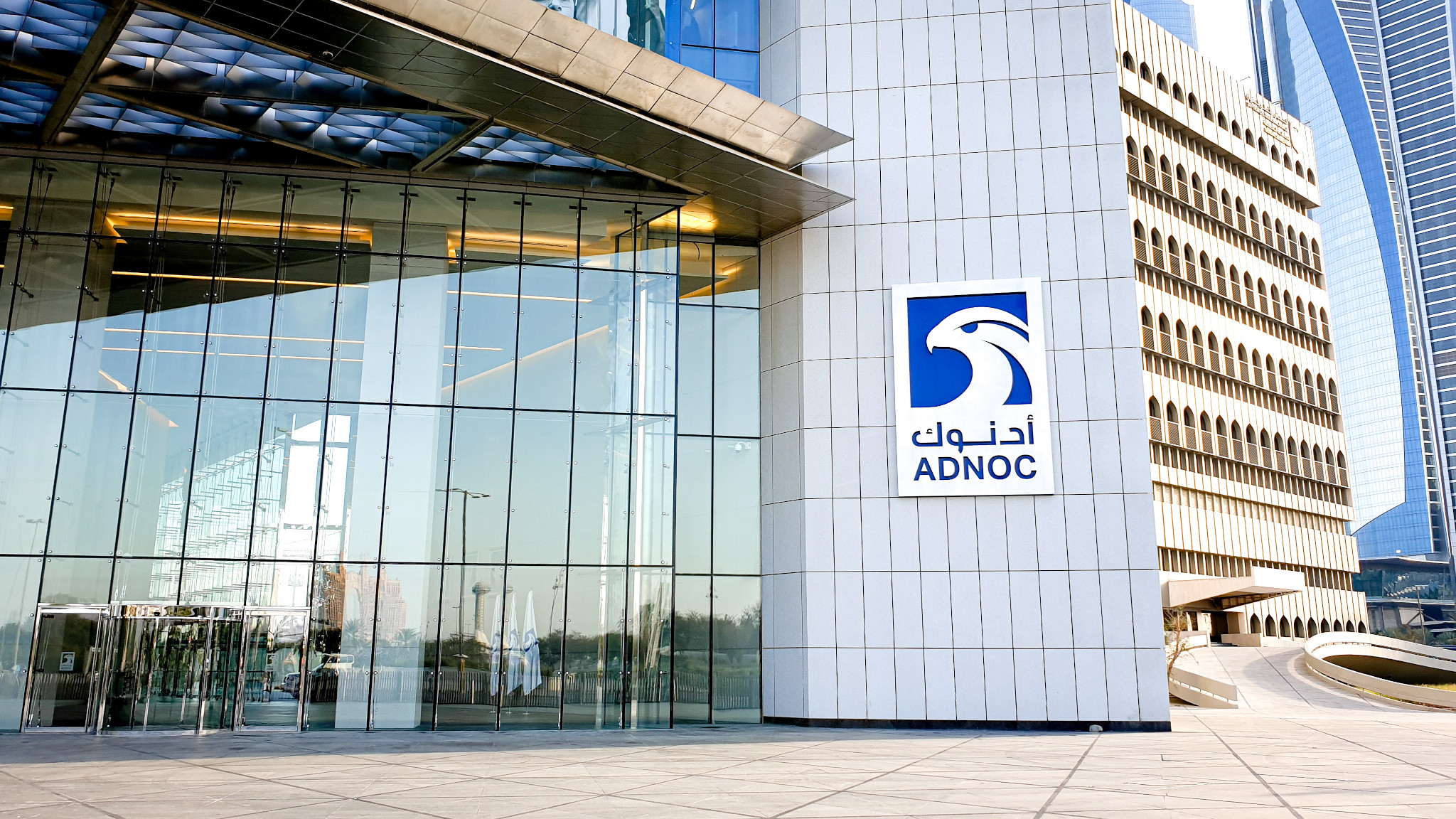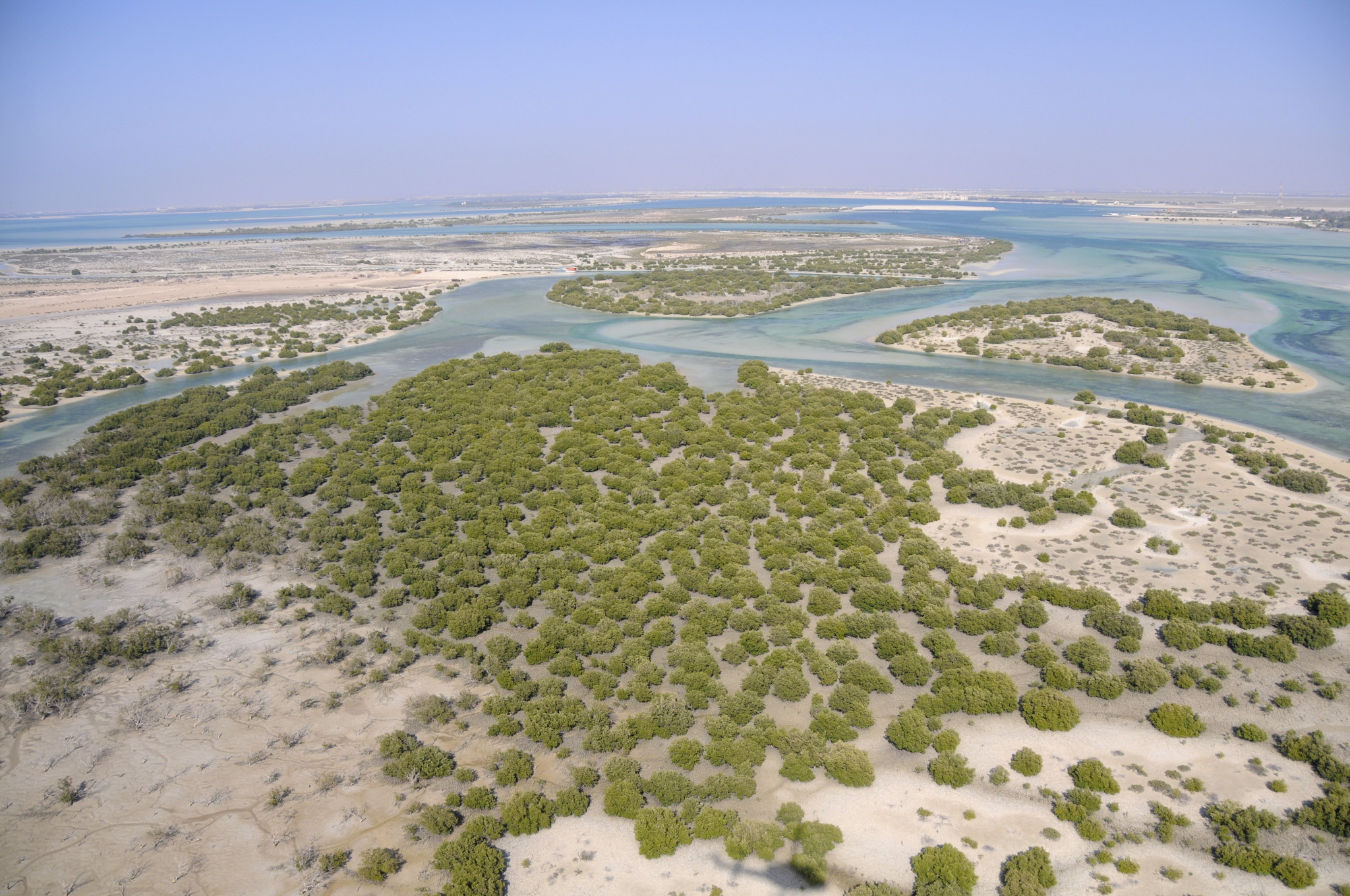Hail & Ghasha: Sour Gas Against Future
Approximate location. By zooming in it is possible to see several artificial islands related to other oil and gas projects.
In the shallow waters off the United Arab Emirates’ sandy coast, Abu Dhabi National Oil Company (ADNOC) is showing off its disregard for the climate and biodiversity. In September 2023, the state-owned company decided to move forward with its Hail and Ghasha project. Hail and Ghasha is meant to contribute to ADNOC’s massive plans for domestic gas expansion. These plans will bust all realistic climate scenarios. In addition, the project will invade the home of the world’s second largest dugong population and numerous other endangered animals.
Note: Reputational risk projects on GOGEL are updated annually. This article was last updated November 4 2025.
“Hail” and “Ghasha” are the names of the two largest fields in the Ghasha gas concession in the United Arab Emirates. ADNOC is developing the two fields jointly as one project. The Ghasha concession includes 8 gas fields spread across a large section of the Persian Gulf west of the city of Abu Dhabi.19243 If Hail, Ghasha and the other fields go into production as planned, ADNOC expects to extract about 1.5 billion cubic feet of fossil gas daily before 2030.19244 In other words, the fields would produce enough every day to fuel the cities of Dubai and Abu Dhabi with gas for more than a year.19245 Production could go on for 4 decades.19246 To extract the gas, ADNOC plans to build 10 artificial islands.19247 These outposts of fossil fuel production are heavily industrialized heaps of sand and gravel covered with concrete, gas pumps, storage tanks and pipelines.19248

A Sour Note
Hail and Ghasha is a risky, expensive and dangerous gas project. The fields in the Ghasha concession are ultra-sour gas fields. Sour gas is a highly toxic type of natural gas which contains large amounts of hydrogen sulfide (H2S). It smells like rotten eggs. The gas in the Hail and Ghasha fields consists of more than 23% H2S. It is therefore considered ultra-sour.19249 Everything bad about sour gas becomes worse when the gas is ultra-sour. Two breaths of sour gas can be enough to kill a person, earning it the nickname “knock down gas”.1925019251 In the US, hydrogen sulfide is one of the leading causes for inhalation-related workplace deaths.19252 Even breathing in minimal amounts make people nauseous and dizzy. Since sour gas also causes loss of smell, those affected by severe sour gas poisoning do not recognize the danger.19253
If sour gas comes in contact with water, it turns into an acid that can eat through several types of metal. Pipelines can rupture or even explode, contaminating the surrounding water, air and soil.19254 For a long time, oil and gas companies did not touch sour gas fields because of the greater risks of extraction and higher costs. ADNOC for instance ignored the ultra-sour fields in the Ghasha concession for decades after discovering them in the 1970s and 80s.19255 Today, the fields have again caught ADNOC’s attention as the UAE aims to become self-sufficient in terms of gas. At the same time, easily accessible fossil resources are becoming scarcer after decades of oil and gas production. Thus, ADNOC, along with its partners Eni, PTTEP, and LUKOIL have decided to throw caution to the winds and proceed with the ultra-sour gas development.1925619589

Drilling in a UNESCO Biosphere Reserve
The Hail and Ghasha fields lie within the UAE’s first ever UNESCO biosphere reserve.19257 Marawah Marine Biosphere Reserve covers 4,200 km2 of ocean and islands and stretches along 120 km of coastline.19258 The UAE established the Marawah reserve in 2007 to protect the world’s second largest dugong population.19259 This peculiar endangered marine mammal moves along the ocean floor and grazes seagrass. This is why many people also know it as the sea cow. Current oil production in the Hail field is already harming their environment.19260
The construction of artificial islands and pipelines as well as the gas operations themselves at Hail and Ghasha will destroy parts of the seafloor and leave less food for the dugongs.19261 Other endangered species in the reserve, like the hawksbill turtle and the green turtle, will also lose feeding grounds and suffer the consequences if the companies cause an ultra-sour gas leak.19262 ADNOC proudly declares that it has conducted one of the most extensive environmental assessments in the country’s history.19263 However, the environmental assessment is little more than a bad excuse for drilling in a nature
reserve.19264 ADNOC and its international partners refuse to respect the boundaries of Marawah as a red line for oil and gas operations. Instead, they are fronting the illusion that there is a “right” way to invade such a sensitive ecosystem. The companies are trying their best to ignore that ultra-sour gas extraction in a marine protected area is completely at odds with any credible commitment to a healthy environment.


ADNOC is selling Hail and Ghasha as a model gas project. The company states that Hail and Ghasha is the world’s first “net-zero emissions” gas project.19265 However, ADNOC only aims to reduce and capture emissions from the operation of the Hail and Ghasha fields. These are emissions directly linked to production activities. Operations represent a small share of the total emissions related to fossil gas. ADNOC’s net-zero claim does not account for emissions from the transportation or end use of the gas. In fact, the net-zero commitment is dwarfed by the expected annual greenhouse gas emissions from burning the gas from the Ghasha gas concession. Burning the gas ADNOC intends to produce from Hail, Ghasha and the other fields would emit more than 20 times as much CO2 as the company aims to capture at the Hail and Ghasha project.19266 In addition, methane will inevitably escape all along the supply chain as the gas makes its way to end users. Methane has a warming effect more than 86 times stronger than CO2 over a 20-year period.19267 ADNOC conveniently leaves all these emissions out of its net-zero equation. It also remains to be seen whether ADNOC will indeed capture and store the amounts of carbon it has promised to. Even the technology-optimistic International Energy Agency recognizes that the history of carbon capture and storage “has largely been one of unmet expectations.”19268
ADNOC’s enthusiastic marketing of Hail and Ghasha cannot cover up that the project marks a dangerous detour for the energy transition. In addition to carbon capture, the company promises to power at least parts of the operations at the Hail and Ghasha fields with renewable energy.19269 Ultra-sour gas processing in the UAE requires 4.5 times more electricity than conventional gas.19270 Using renewable resources to meet the project’s staggering energy demand is a complete waste. Instead of going straight to consumers and serving the energy transition in UAE, renewable energy will keep the fossil fuel industry alive.
Hail and Ghasha is a dead end branded as a credible pathway to the future. It is a dangerous, expensive project with potentially disastrous consequences for marine wildlife. With the Hail and Ghasha project, ADNOC, Eni, and LUKOIL are discrediting themselves as reliable partners in the shift to a renewable future.
Groups working on the issue: Leave it in the Ground, Global Witness
Further reading:
https://www.urgewald.org/en/shop/fossil-fuel-expansion-united-arab-emirates
Sources:
1.5 billion cf/259.5 (average gas use of one UAE citizens per year)=5,780,963 UAE
citizens potential gas use for a year.Population and gas consumption figures
from https://worldpopulationreview.com and Statistical Review of World Energy 2023:
https://www.energyinst.org/statistical-review
https://www.adnoc.ae/en/news-and-media/press-releases/2023/adnoc-takes-fid-on-worlds-first-project-that-aims-to-operate-with-net-zero-emissions
and IPCC (2006) P.2.16 https://www.ipcc-nggip.iges.or.jp/public/2006gl/pdf/2_Volume2/V2_2_Ch2_Stationary_Combustion.pdf